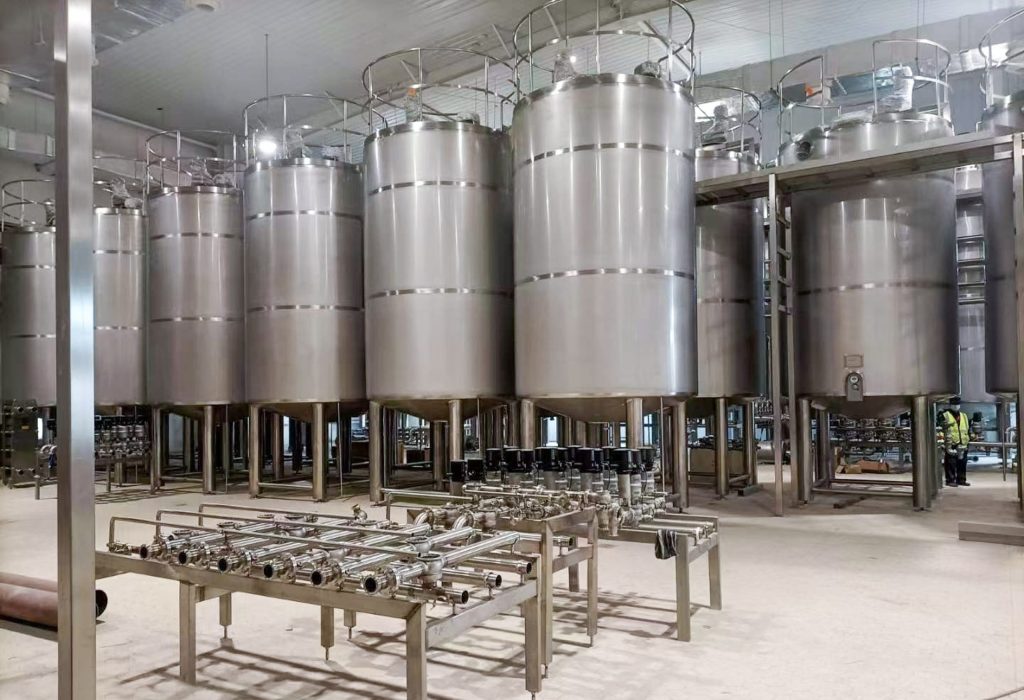Introduction

In the realm of food processing, maintaining high standards of cleanliness is crucial for ensuring product safety and quality. Clean in Place CIP systems play a pivotal role in achieving these standards efficiently and effectively. This blog explores in-depth the significance of CIP systems in food processing facilities, covering their components, operation principles, benefits, challenges, case studies, and more.
What are Clean in Place CIP Systems?
Clean in Place CIP systems are automated systems widely used in food processing plants to clean equipment and pipelines without the need for disassembly. This method ensures thorough cleaning and sanitation, crucial for preventing contamination between production runs.
Components of CIP Systems
CIP systems typically include several key components:
- Cleaning Solution Tanks: These hold the detergents and sanitizers used for cleaning.
- Pumps: Essential for circulating the cleaning solutions through the equipment.
- Heat Exchangers: Help in maintaining optimal temperatures for effective cleaning.
- Valves: Control the flow of cleaning solutions and water.
- Sensors and Controls: Monitor and regulate the cleaning process.
Operation Principles
CIP systems operate on a series of well-defined principles:
- Pre-rinse: Removes residual product and debris from the equipment.
- Cleaning: Uses detergent solutions to dissolve soils and contaminants.
- Rinse: Flushes out the cleaning solutions and loosened soils.
- Sanitization: Applies sanitizers to eliminate remaining microbes and ensure equipment is safe for the next production cycle.
Importance of CIP Systems in Food Processing
Ensuring Food Safety
Maintaining clean equipment through CIP systems is critical for preventing microbial contamination. Proper sanitation helps ensure that food products meet safety standards and are safe for consumption.
Enhancing Efficiency
CIP systems streamline the cleaning process, reducing downtime between production runs. This efficiency improvement allows for more continuous production schedules and optimal equipment utilization.
Meeting Regulatory Standards
Compliance with stringent hygiene and sanitation regulations is facilitated by effective CIP systems. These systems provide consistent cleaning and disinfection, which are essential for regulatory approval and customer trust.
Challenges in Implementing CIP Systems
Validation and Verification
Ensuring that CIP systems are validated and verified to perform effectively can be challenging due to variations in equipment design and cleaning requirements. Validation involves demonstrating that the system consistently achieves the desired level of cleanliness.
Water and Chemical Usage
Balancing the use of water and chemicals in CIP systems is essential to achieve effective cleaning without excessive resource consumption. Proper management of these resources is crucial for sustainability and cost control.
Comparison of Different Types of CIP Systems
| CIP System Type | Description | Advantages | Disadvantages |
|---|---|---|---|
| Single-Use CIP | Uses disposable components for each cleaning cycle, minimizing cross-contamination | Reduced risk of product contamination | Higher initial cost |
| Recirculating CIP | Reuses cleaning solutions, circulating them through the system multiple times | Cost-effective for large-scale operations | Requires efficient filtration for reuse |
| Hybrid CIP | Combines aspects of single-use and recirculating systems, offering flexibility | Balance between cost and contamination risk | Complex to implement and maintain |
Benefits of CIP Systems
Time Savings

Automated cleaning processes significantly reduce the time required for manual cleaning activities. This time savings translates into increased production uptime and operational efficiency.
Cost Efficiency
By minimizing manual labor and reducing water and chemical usage, CIP systems contribute to overall cost savings for food processing facilities. The initial investment in CIP systems is often offset by long-term operational efficiencies and reduced maintenance costs.
Conclusion
Clean in Place CIP systems are indispensable in modern food processing operations, ensuring compliance with hygiene standards, enhancing operational efficiency, and maintaining product integrity. While challenges such as validation and resource management exist, the benefits of implementing CIP systems far outweigh the initial investments. They play a crucial role in safeguarding food safety and meeting regulatory requirements, making them essential components of any food processing facility.
FAQ
Q:What is the primary function of clean in place CIP systems in food processing?
A:CIP systems automate the cleaning and sanitation of food processing equipment, ensuring hygiene and preventing cross-contamination between batches.
Q:How do clean in place clean in place CIP systems contribute to operational efficiency?
A:By reducing downtime associated with manual cleaning, Clean in place CIP systems enable more continuous production schedules and optimize equipment utilization.
Q:What are the key components of a typical CIP system?
A:Key components include cleaning solution tanks, pumps, heat exchangers, valves, and sensors, all working together to deliver effective cleaning and sanitation.
Q:What challenges are associated with implementing clean in place CIP systems?
A:Challenges include validating cleaning effectiveness across diverse equipment types and managing water and chemical usage to balance effectiveness and sustainability.
Q:How do CIP systems help in meeting regulatory standards?
A:CIP systems provide consistent cleaning and sanitization processes, essential for compliance with stringent food safety regulations and maintaining consumer confidence.

